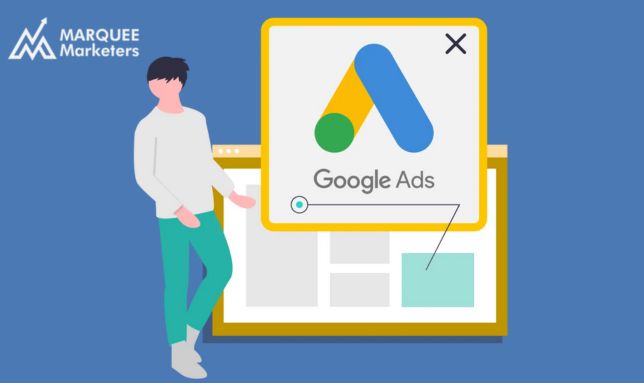A Comprehensive Guide to Google Ads Campaign
In today’s digital landscape, a Google Ads campaign is an essential tool for businesses seeking to expand their reach and drive growth. Whether you’re a small business owner or managing a larger enterprise, understanding the fundamentals of Google Ads can significantly enhance your marketing strategy. This guide will walk you through the basics and help you optimize your campaigns for success.
1. What Is Google Ads?
Google Ads, formerly known as Google AdWords, is an online advertising platform developed by Google. It allows businesses to create ads that appear on Google’s search engine results pages (SERPs) and other Google properties.
1.1 Key Features of Google Ads
-
- Targeted Advertising: Reach specific audiences based on their search queries, location, interests, and more.
-
- Pay-Per-Click (PPC): Only pay when users click on your ads, ensuring cost-effective campaigns.
-
- Measurable Results: Track and analyze ad performance to refine strategies.
Therefore, a well-structured Google Ads campaign can drive traffic, improve brand awareness, and generate valuable leads.
2. How Does Google Ads Work?
Google Ads operates on a bidding system. Advertisers bid on keywords relevant to their business, competing for ad placements.
2.1 Steps to Understanding the Process
-
- Keyword Selection: Identify keywords your target audience uses when searching for products or services.
-
- Ad Creation: Write compelling ads that include a headline, description, and link to your website.
-
- Bidding: Set a maximum bid for each click. Google’s auction system determines which ads are displayed based on bid amount and ad quality.
-
- Ad Placement: Winning ads appear on SERPs or partner websites.
-
- Costs: Advertisers are charged only when users click on their ads.
Moreover, understanding this process is crucial for running effective campaigns.
3. Components of a Successful Google Ads Campaign
3.1 Campaigns and Ad Groups
A Google Ads campaign contains multiple ad groups, each focused on specific themes or products. This structure improves ad relevance and performance.
3.2 Keywords
Keywords are the terms users search for. Selecting the right keywords ensures your ads appear to the most relevant audience. For example, use tools like Google Keyword Planner to find high-performing keywords.
3.3 Ad Extensions
Ad extensions add additional information to your ads, such as phone numbers, site links, or locations. Consequently, these extensions enhance visibility and click-through rates.
3.4 Quality Score
Google assigns a Quality Score to your ads based on relevance, ad quality, and landing page experience. A higher score can reduce costs and improve ad placements.
4. How to Set Up a Google Ads Campaign
4.1 Create a Google Ads Account
Sign up for a Google Ads account using your Google credentials.
4.2 Define Campaign Goals
Determine your objectives, such as increasing website traffic, generating leads, or boosting sales.
4.3 Choose a Campaign Type
Select from options like:
-
- Search Ads: Text ads on SERPs.
-
- Display Ads: Visual ads on partner websites.
-
- Video Ads: Ads on YouTube.
4.4 Set a Budget
Decide on your daily or monthly spending limits. Additionally, Google Ads allows for flexible adjustments.
4.5 Write Your Ads
Craft engaging ad copy that highlights your offerings and includes a clear call-to-action (CTA).
4.6 Launch and Monitor
Review your settings and launch your campaign. Regularly monitor its performance to make necessary adjustments.
5. Tips to Optimize Your Google Ads Campaign
5.1 Conduct Thorough Keyword Research
Use tools like Google Keyword Planner to identify keywords that align with your goals. In addition, consider using long-tail keywords for specific targeting.
5.2 Experiment with Ad Variations
A/B test different ad copies and formats. For example, compare headlines, descriptions, and CTAs to identify what resonates most with your audience.
5.3 Monitor Key Metrics
Track metrics such as:
-
- Click-Through Rate (CTR): Measures ad engagement.
-
- Cost-Per-Click (CPC): Tracks spending per click.
-
- Conversion Rate: Shows how many users complete desired actions.
5.4 Use Negative Keywords
Exclude irrelevant keywords to prevent your ads from appearing in unrelated searches. As a result, this improves ad relevance and reduces costs.
5.5 Optimize Landing Pages
Ensure landing pages are relevant to your ads, load quickly, and provide a seamless user experience. This helps improve Quality Scores and boosts conversions.
6. Why Continuous Optimization Is Essential
The success of a Google Ads campaign depends on regular monitoring and optimization.
6.1 Analyze Performance
Use Google Ads reports to identify areas for improvement. For instance, adjust bids for underperforming keywords or pause ineffective ads.
6.2 Stay Updated
Google frequently updates its ad platform. Therefore, staying informed about new features and best practices is crucial for maintaining a competitive edge.
7. Conclusion
A well-executed Google Ads campaign can drive significant growth for your business. By understanding the platform, setting clear goals, and continuously optimizing your campaigns, you can maximize your return on investment.
For more insights on digital marketing and tips to improve your campaigns, subscribe to our blog. If you need assistance with your Google Ads, don’t hesitate to contact our team of experts. Happy advertising!
For more details contact us on Facebook | Instagram | LinkedIn
